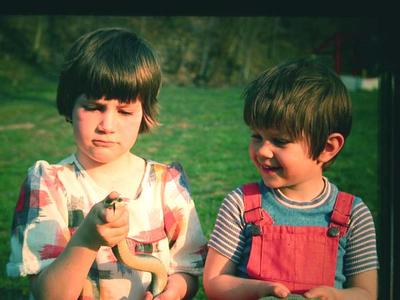
Blowing Viper!
Yes, my research work is in herpetology. Amphibian and reptiles have had a special place in my life. Folks often ask me how my wife stands all those snakes in the house. I respond, “She is a great lady. I love her scaly hands and you should see how she catches flies with her tongue!”
During the first few years of our marriage, I was busily conducting research for my Master’s Degree (a taxonomic study of amphibians in Jackson County). I remember vividly when once my mother-in-law came to visit. She opened a cabinet in the house and saw many mason jars full of preserved frogs, toads, and salamanders. All specimens were labeled as to species, date collected, and location. She looked at my wife and said, “You had best hope that he goes first!”
One of my favorite snakes that a person would have the fortune to observe is the hognose snake. In the photo above, our two daughters are holding this wonderful snake captive. This photo was taken in 1977.
The hognose is a stout bodied snake with an upturned, shovel-like nose. The hognose has a super behavior display. When one first encounters this snake, it flattens its head and neck and is very much cobra-like. It hisses very loudly and strikes with its mouth closed. This display is why many Appalachian folks consider it poisonous and the common names locally are blowing viper, spread head, or puff adder. I had a lady out in the country explain that this snake actually blows poison and I had best drop my captured hognose and, for heavens sake, do not breathe in the vapors! Oh my, all this fright from a harmless snake that has a limited diet of mainly toads.
If the “Blowing Viper” behavior does not work, then the snake goes into its second neat defensive mode. If provokes, it will writhe and twist, rubbing it’s mouth against the ground, and finally roll over on it’s back as though dead. It will eliminate musk during this second behavior that is ill smelling. In addition, it keeps its mouth open, tongue hanging out, and it is as limp as a dead snake. It is a great dying show.
My students loved to see this display. If you turn the “dead” snake over, it will promptly roll over on it’s back again. If you leave the beast alone for a time, it will lift it’s head, turn over, and slither away. What a neat reptile!




1 Comments:
Snakes... I like stories of snakes not pictures of snakes... lol.
Post a Comment
<< Home